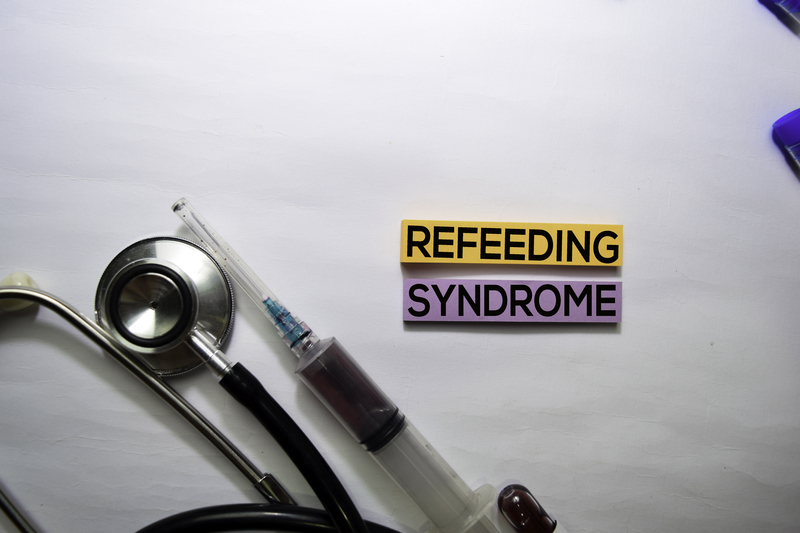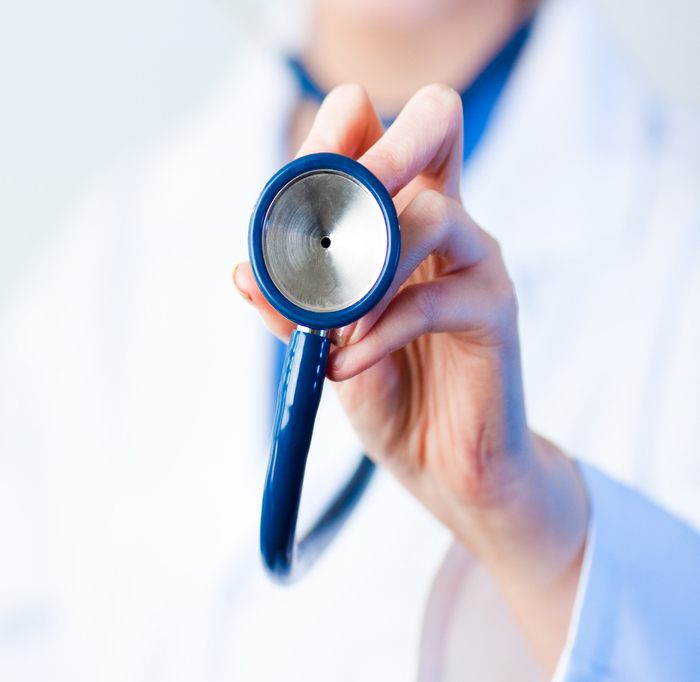- Calls to this hotline are currently being directed to Within Health, Fay or Eating Disorder Solutions
- Representatives are standing by 24/7 to help answer your questions
- All calls are confidential and HIPAA compliant
- There is no obligation or cost to call
- Eating Disorder Hope does not receive any commissions or fees dependent upon which provider you select
- Additional treatment providers are located on our directory or samhsa.gov
Refeeding Patients with Anorexia Nervosa: What Does Research Show?
While patients recovering from anorexia are often in dire need of sustenance, feeding them too much too soon can also be dangerous.
The issue is called anorexia refeeding syndrome, and it can lead to significant electrolyte imbalances and concerns with muscles, lungs, heart, and the brain. This problem causes swelling, confusion, and even death.
Researchers say that up to 22% of people hospitalized for anorexia nervosa have mild cases of refeeding syndrome while in the hospital.1 And while prompt treatment of the condition is important, preventing refeeding syndrome altogether is even better.
What is Refeeding Syndrome?
Our bodies work best when they receive sustenance regularly, but they’re capable of adjusting when that process is disturbed.
Without regular feeding, hormonal and metabolic shifts occur, allowing the body to continue functioning on less nourishment. However, while adjustment is technically a survival mechanism, it can lead to a number of serious health concerns.
Once these shifts occur, the body will react differently to food and drinks. Patients can become ill after eating a larger meal than they’re used to, and other molecular reactions could be dangerous or even deadly.
The adverse reactions to these fundamental changes are collectively known as refeeding syndrome.
The condition is often associated with anorexia, but it can also happen to people with other medical conditions, like cancer, or those who have faced starvation for any number of reasons. Anytime a person loses a significant amount of weight and keeps it off for a prolonged period, whether intentionally or not, the risk of refeeding syndrome appears.

Signs of Anorexia Refeeding Syndrome
During starvation periods, the body will switch from using carbohydrates to using fat and protein as its primary source of energy. Certain compounds, including phosphate, magnesium, thiamin, and other minerals, are essential in making this change happen.2
But when someone in this state suddenly eats a lot at once, these same compounds are called in to help the body process the food. The body will pull on any reserves it can locate, resulting in additional depletion and sickness.2
While any mineral imbalance is unhealthy, a drop in phosphate may have the most severe consequences. It can negatively impact almost every system in the body.
Very low phosphate levels can damage the heart and cause heart attacks. Unusual chest and heart sounds may occur in the early stages, or the person may complain of weakness or a fluttering chest sensation.
Other Signs of Anorexia Refeeding Syndrome
Low phosphate levels aren’t the only sign of refeeding syndrome. The condition can have a number of symptoms caused by nutrient imbalance and fluctuating hormone levels, including:3
- Confusion
- Convulsions
- Coma
- Muscle weakness
- Seizures
- Trouble breathing
Blood tests may be able to reveal further signs of refeeding syndrome, including changes in magnesium levels.
While these symptoms can be worrying to experience, they can also serve as early indicators of an oncoming problem, helping doctors spot and stop further complications before it’s too late.
Treating Refeeding Syndrome
Treating Refeeding Syndrome
Anyone with anorexia can develop refeeding syndrome during recovery. However, in the early stages of treatment, doctors typically control most of the refeeding process and can take quick action if symptoms appear.
Reducing caloric intake while introducing electrolytes is generally considered the best way to address or prevent refeeding syndrome. This can be done through a number of methods, including:4
- Electrolyte replacement: Before receiving any food, patients are given nutrient-dense solutions to help their bodies adjust to the changes. This step can last for up to three days.
- Conservative early feeding: Patients start on as little as 10 kcal/kg/day to ensure a healthy transition.
- Slow reintroduction of calories: Blood work and other measurements are used to determine how many additional calories patients should consume as time goes on.
In the very early stages of recovery, some people experiencing anorexia need to get their meals via a nasogastric tube. In these cases, doctors can adjust the flow of nutrients as needed. Magnesium and other critical electrolytes can also be administered via IV drip.
These interventions can help people feel better and, in some situations, help to save their lives.
How Quickly Should Patients Start Eating Again?
While it’s generally agreed that introducing large meals too quickly can make people sick, some experts say refeeding strategies that are too conservative could do patients more harm than good.
Studies have been conducted using as much as triple the amount of calories currently recommended for anorexia recovery, with no early signs of refeeding syndrome detected.5
Researchers point out that these larger meal plans are still set far below the average caloric needs of healthy people. However, they argue that an accelerated plan could help people heal more quickly.
Plans like this have resulted in patients gaining up to 4 pounds per week, which is twice what has come to be expected in a traditional program.6
This difference is important, researchers say, as it allows patients to weigh more when they leave the hospital. And that early weight gain is associated with a more robust and lasting recovery.
What Can Families Do?
Watching a loved one go through anorexia recovery can be equal parts frightening and frustrating, but there are still some ways to participate in the process.

Speak with the Medical Team
Ensuring the person gets care from a team familiar with refeeding syndrome symptoms is a good first step.
The caregivers should understand what refeeding syndrome looks like and how it can be prevented. They should also provide ongoing monitoring to stay ahead of any medical emergencies.
You can ask the team about the treatment program and any included protections. And you can keep checking in on progress and how the recovery is going.
Find a Treatment Provider
Support Your Loved One
Most importantly, you can talk to your loved ones and help support them through this challenging process. Maintaining a position of love, patience, and understanding can help your family member feel comfortable and supported.
Ensuring someone that the doctors treating them have the best intentions in mind may be helpful. But simply being there for the person you love may be the biggest help of all.
It can take time, but with some help, recovery from anorexia nervosa is always possible.
Resources
- Mehler P. (2022). Anorexia Nervosa in Adults and Adolescents—The Refeeding Syndrome. UpToDate. Accessed August 2022.
- Mehanna HM, Moledina J, Travis J. (2008). Refeeding syndrome: what it is, and how to prevent and treat it. The BMJ; 336(7659):1495–1498.
- Refeeding Syndrome. (n.d.). The Cleveland Clinic. Accessed on December 7, 2022.
- Mehanna H, Nankivell PC, Moledina J, & Travis J. (2009). Refeeding syndrome–awareness, prevention, and management. Head & Neck Oncology; 1:4.
- Smith K, Lesser J, Brandenburg B. et al. (2016). Outcomes of an inpatient refeeding protocol in youth with Anorexia Nervosa and atypical Anorexia Nervosa at Children’s Hospitals and Clinics of Minnesota. Journal of Eating Disorders; 4(35).
- Faster Weight Gain Can Be Safe for Hospitalized Anorexia Patients. (2015, July 8). Johns Hopkins Medicine. Accessed August 2022.
Published November 26, 2025

